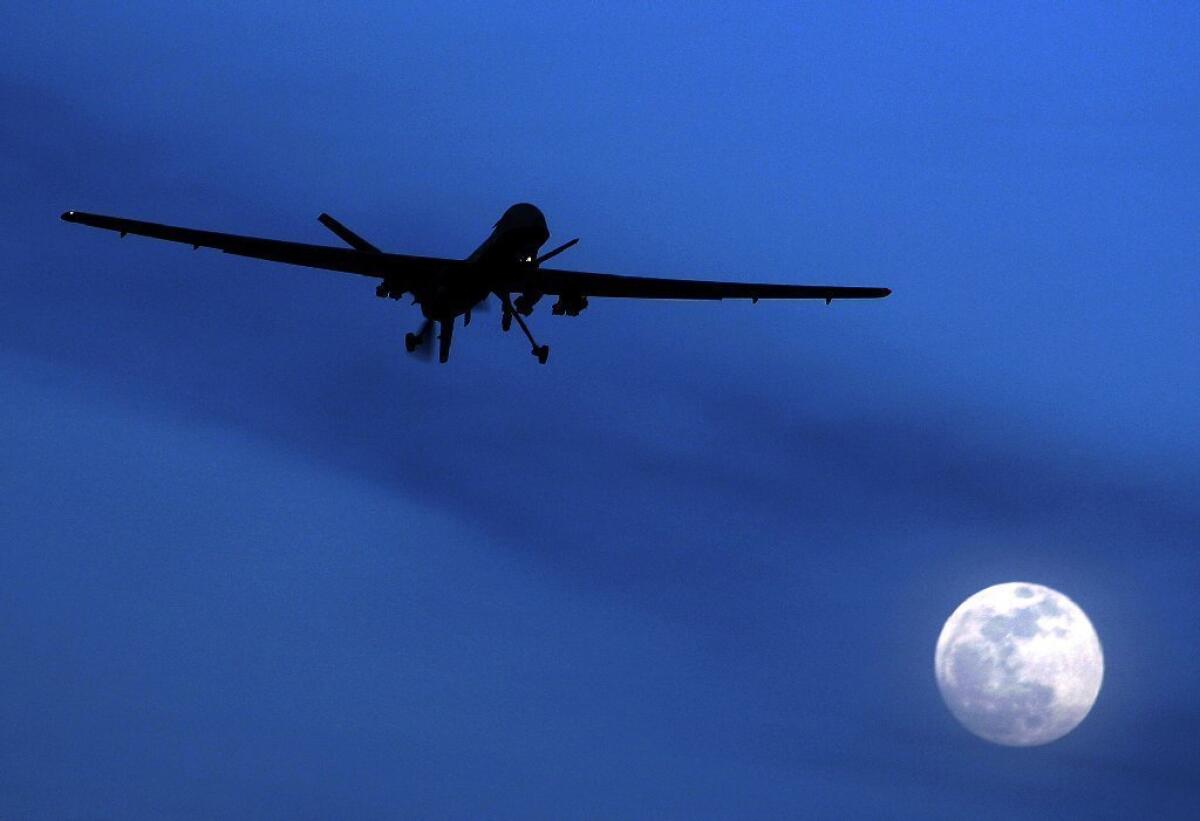Drones: Killing enemies, and creating them [Blowback]

- Share via
In his Feb. 5 Op-Ed article, “The case for drone strikes,” Michael W. Lewis presents a distorted picture of the methodology and conclusions of a report I coauthored, “Living Under Drones: Death, Injury, and Trauma to Civilians from U.S. Drone Practices in Pakistan.”
First, Lewis suggests that our report errs in adopting the civilian casualty estimates provided by the Bureau of Investigative Journalism, based in Britain. It is true that the bureau’s estimates of civilian casualties have been higher than the two other institutions -- the Long War Journal and the New America Foundation -- compiling the information available on this issue.
But as we explain in our report, we find the bureau’s estimates more reliable not because it reports the highest numbers of civilian casualties but because its methodology is more robust than those used by its competitors. Unlike the other data aggregators, the bureau treats source information more transparently, relies on its own researchers as well as news reports and updates its information frequently. We are joined in this conclusion by a recent Columbia University study, which also finds that of the three competing aggregators, only the Bureau of Investigative Journalism does not “significantly and consistently underestimate” the number of civilians killed by U.S. drones.
Lewis also faults the bureau for failing to describe recent civilian casualty trends. Here, he is simply misinformed. In addition to providing aggregate totals, the bureau posts data on civilian casualties per incident in chronological order.
Second, and more important, Lewis anoints drone use in Pakistan as the best of four imperfect choices to manage threats posed by Al Qaeda and others who wish to harm the United States. As our report explains, there is substantial evidence to suggest that this is a shortsighted proposition.
A Pew Research Poll conducted in 2012 found that only 17% of Pakistanis favor the U.S. conducting “drone strikes against leaders of extremist groups, even if they are conducted in conjunction with the Pakistani government.” Among Pakistanis familiar with the drone campaign, the study noted that 94% believe the attacks kill too many innocent people, and 74% say they consider the U.S. an enemy, up from 64% three years earlier.
This growing anti-American and anti-drone sentiment may well lead to increased recruitment by Al Qaeda and other extremist groups. In Yemen, membership in Al Qaeda in the Arabian Peninsula has more than tripled in recent years as drone strikes there have intensified, according to journalist Gregory Johnsen.
In Lewis’ rhetorical false choice, we are asked to decide between a ground war with U.S. troops, one with Pakistani forces, inaction or drone strikes. There is another option: a law enforcement approach that privileges intelligence-gathering, aggressive investigation and meaningful efforts to arrest and detain, all guided by the rule of law.
ALSO:
Dorner manhunt: In defense of the LAPD
The real audience for President Obama’s State of the Union speech
James Cavallaro is a professor at Stanford Law School, where he directs the International Human Rights and Conflict Resolution Clinic.
If you would like to write a full-length response to a recent Times article, editorial or Op-Ed and would like to participate in Blowback, here are our FAQs and submission policy.
More to Read
A cure for the common opinion
Get thought-provoking perspectives with our weekly newsletter.
You may occasionally receive promotional content from the Los Angeles Times.








